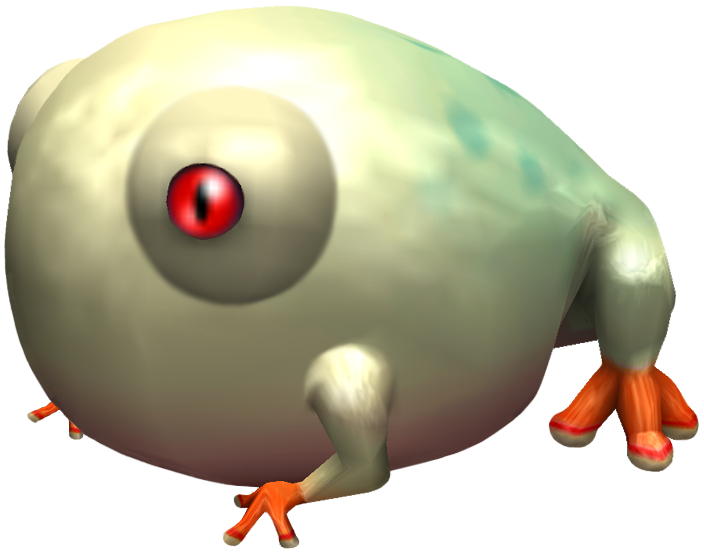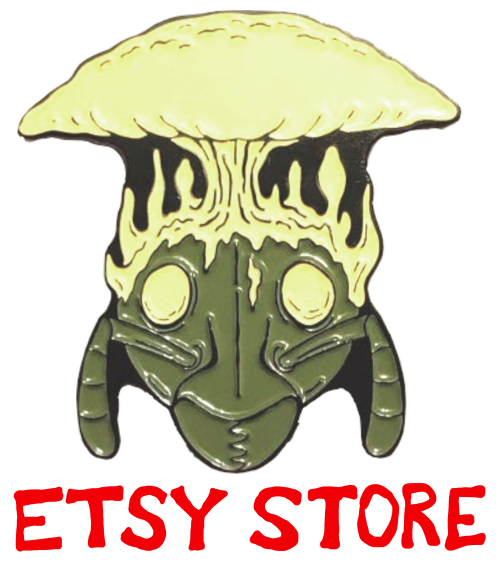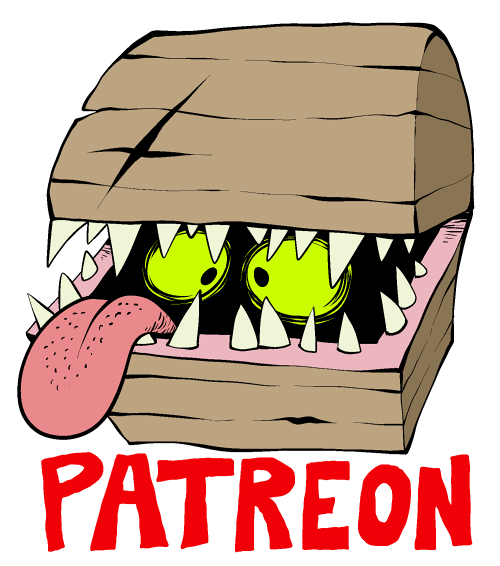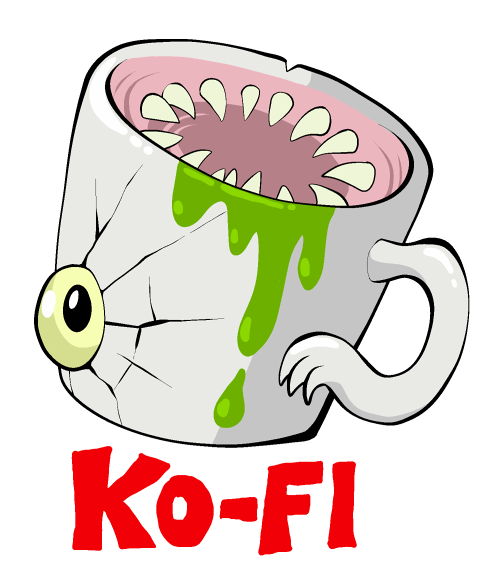There's absolutely no conceivable way that my opinions on Snagrets and Bulborbs are really worth that wait, but you're about to get them anyway, and just in time for the release of Pikmin 4!
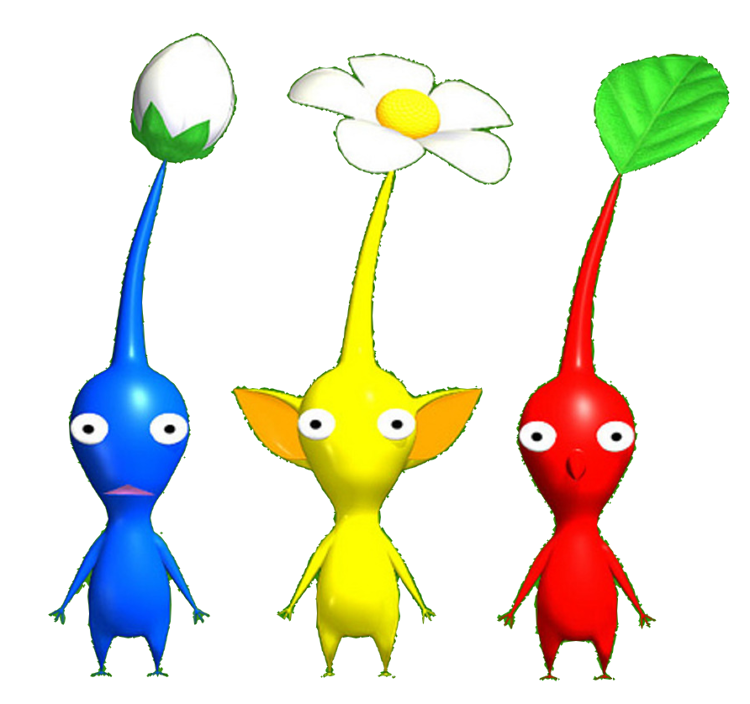
The Pikmin Themselves
For those few who need this to be recapped, Pikmin is about a little tiny space captain, Olimar, landing on a planet that looks exactly like our own...except for the fact that there are no signs of living humans and the wildlife is different. So different, the equivalent to basically ants are tiny, humanoid plants. The creepy-adorable Pikmin are peanut shaped, with tiny arms and legs, staring white eyes and a single stalk atop their heads, which begins as a green leaf and eventually develops into a single flower.
Blue Pikmin are amphibious, possessing what resembles a single, slitlike pink mouth but is actually a gill opening! Yellow Pikmin have large pointy ears, can be thrown the farthest, and in the first game are the only Pikmin able to carry bombs. Red Pikmin, which have pointed noses, are the strongest fighters and are fire resistant.
As adorable as the Pikmin are, they're also pretty ruthless, ganging up to kill larger creatures in again an ant-like fashion.
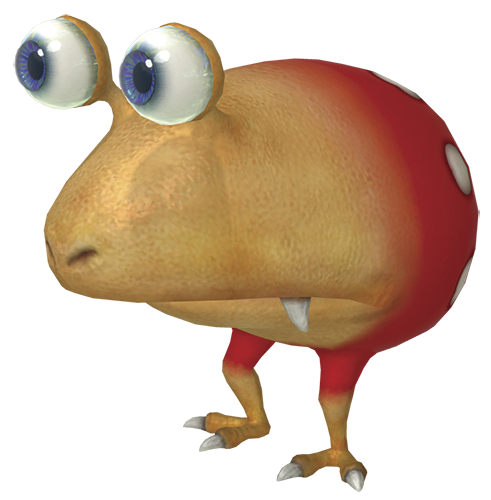
The Bulborb
(Oculus kageyamii russus)
The Bulborb is the most famous enemy creature in the game series and the natural enemy of Pikmin, an animal shaped sort of like a pear turned on its side. Its rounded rear is red, with white polka dots, while its pointier front end is yellow. This entire bulbous body opens into a mouth with two large fangs and a big tongue, it has two little t-rex-arm legs and it has two big eyeballs bobbing around on short stalks. Simple, memorable, and just the right balancing of menace with comical cuteness, the perfect "villain" to the equally quirky Pikmin.Bulborbs are nocturnal, and in the first three Pikmin games, you're kept to a strict daytime schedule. Sleeping bulborbs will, however, wake up and attack if you get too close, or of course if your Pikmin attack first. The "kageyamii" in its official latin name comes from Daisuke Kageyama, credited as its designer.
Naturally, Bulborbs have variants and relatives, forming a family of creatures known collectively as Grub-Dogs!

The Spotty Bulbear
(Oculus terribilis dotticum)
These are the next best known grub dogs, rounder and darker colored animals with puffier lips. They patrol a set path, and in the second game they're active during the day. They're also quick to recover health and can even revive from apparent death multiple times; otherwise, they're just slightly different looking Bulborbs, except for the fact that they're sometimes followed around by a pack of little babies. This also appears to be true of the Bulborbs, but looks can be deceiving.

The Water Dumple
(Icthyosa felinis)
One of my favorite designs, this is actually an aquatic bulborb that evolved to lose its legs and its eyes, becoming this weird, slimy, cobblestone-textured blue lump with a catfish-like mouth (hence the Latin) and subtle "fins" of "flippers," kind of just a little extra flesh that flares out. It's such a nice, simple, compact, odd creature that I really wish existed. How could you not love a fish tank full of these goofy, blind miniature whale-blobs?
The Breadbug
(Pansarus gluttonae)
The Breadbug looks like it should be considered part of the Grub Dog family, but the similar shape is apparently just convergence. It looks like a wrinkly, reddish bread roll with feet, a Bulborb-like muzzle, and luminous blue eyeballs tucked just under the "bread roll crust." It's a gentle looking animal, and is in fact fairly nonviolent, but it will try to snatch food and take objects your Pikmin are carrying back to the nest!The oddest thing about the Breadbugs, however, is that there are "dwarf bulborbs" in the game, which not only look exactly like juvenile Bulborbs, but as mentioned, they follow the "adults" around exactly like the juvenile Bulbears. In Pikmin 2, research notes reveal that these are actually a small species of breadbug that evolved to perfectly mimic small grub-dogs for protection.
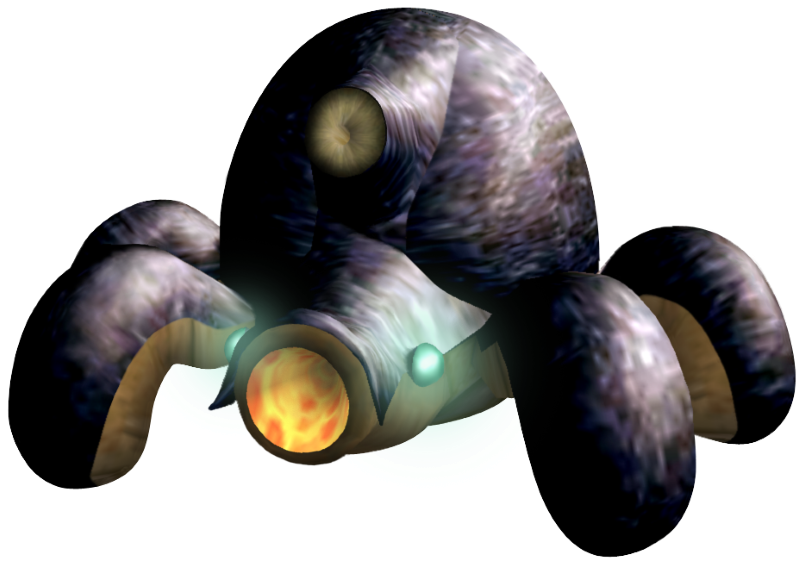
The Armored Cannon Beetle
(Granitus chukkulinae)
Moving on from the grub dogs for now, the cannon beetle is an arthropod with four curved, rounded legs - sort of like boxing gloves without the thumbs - a tubular cannon-like head with small blue eyes on the sides and a circular "blowhole" facing forward on its big, dome shaped back. When it sucks in air through this upper orifice, it's able to fire a spherical stone from its mouth.The only way to defeat the cannon beetle is to throw a Pikmin into its air intake, which somehow doesn't harm the Pikmin, but causes the beetle to overheat and flip open the two halves of its shell. It doesn't seem to have wings, but it evolved those beetle-like elytra so it can expose its soft abdomen to the air when it needs to cool off, an interesting detail! Unfortunately, that also means it exposes its soft abdomen to your bloodthirsty army of botanical imps.
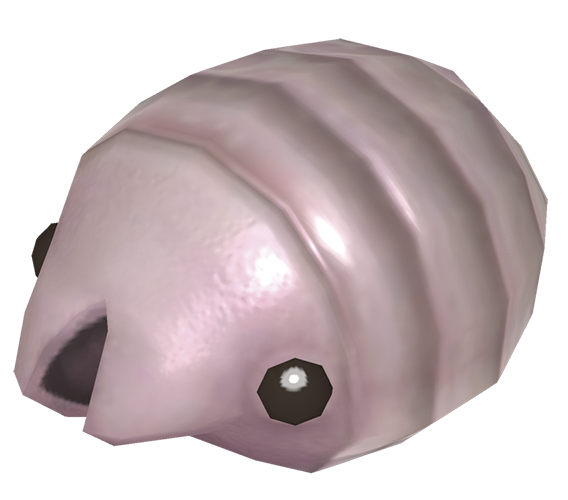

The Sheargrub
(Himeaga mandibulosa)
Great little creatures! Part of a family referred to as "mandiblards," the Sheargrubs are swarming, burrowing arthropods who spend their entire lives in a larviform state and exhibit sexual dimorphism; the adorable females are pinkish, nearly round maggotlike organisms with beady, dark eyes and toothless, vertical mouths. These are harmless to living things, but apparently scavenge corpses including those of dead Pikmin, and they may deconstruct the bridges you build.Male Sheargrub are more colorful, with dark brown bodies and vivid purple, armored looking heads with green eyes and longer, sharper mouths, like a birds beak turned sideways. These are active predators

The Shearwig
(Himeaga volaris)
A Mandiblard with much more extreme dimorphism than the Sheargrubs, the male Shearwig has an emerald green armored head with jaws resembling the leaves of a Venus's fly-trap, and a small but fully functional pair of wings! Visually, a maggot with fly wings and a fly-trap face, a really fun and aesthetically cool combination. The females of the species are so specialized that we never even see them; they apparently remain completely underground, and are mentioned to only emerge during a brief spawning period.So they're like cicadas, except only the males get wings, and the males are already mature and active for extended periods of time while the females are still developing, which is unheard of in any of our own arthropods. Maybe the males actually prevent predators from digging up the females? I wonder if these creatures die after the big mating frenzy, or the females simply go back underground while the males keep on patrolling.
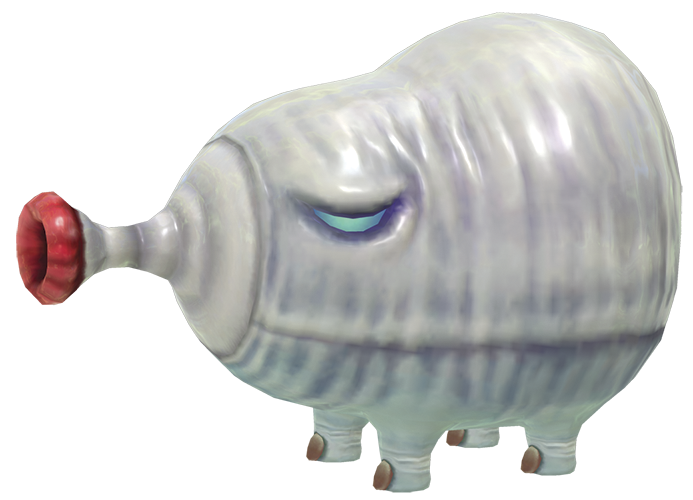
The Fiery Blowhog
(Sus draconus)
With a Latin name meaning "pig dragon," the adorable blowhog looks kind of like a wine jug, with a barrel-shaped body that tapers into a narrow proboscis ending in a circular, red sucker. It has a grey and white, wrinkled texture, four little cylinder legs with a single toenail each, and its pale blue, purple-edged eyes are mostly closed into narrow, gloomy crescents. As both the common and latin name imply, it breathes fire! I appreciate that it isn't the predictable lava-colored, rocky, scaly or spiky fire breather. Maybe that's what bores me about most fire-element creatures in games, the repetitive textures and color schemes just to make it all too obvious what they do. More cliche' is the addition of a blue-snouted "watery" Blowhog in subsequent games, but I like the official explanation that both are filled with liquid anyway, and the watery species simply lacks the compounds that make it flammable. There's also the fact that, since you're insect-sized, the watery one's water works more like suffocating goo.
The Pearly Clamclamp
(Lapis regrettabilis)
This mollusk looks like a scallop, but produces a fragile "pearl" and can fully open its shell, so it's like basically every generic cartoon bivalve, except that it's a fully terrestrial forest floor dweller and it's a predator! The pearl is a lure attractive to various organisms that love shiny objects, including Pikmin. When something steps on the soft inner tissue, the shell snaps shut and the prey is digested, seemingly instantly! I love the creaky hinge noise the shell makes as it opens up, too.
The Iridescent Flint Beetle
(Pilli envelopens)
This poor little thing is a simple, metallic green, lozenge shaped beetle with four stubby legs and two simple eyestalks. It's harmless, but your Pikmin can chase it around and terrorize it to collect items. In a later game, it gets a drastic redesign into a weird crab-like organism, but we'll treat that as a "new" creature to review when the time comes.
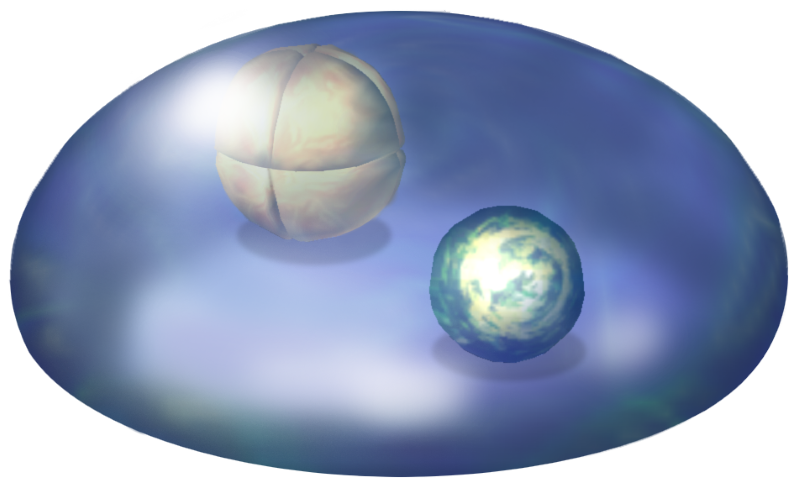
The Goolix
(Binuclei siphonophorus)
I'm not sure why they named this after siphonophores, which are more complex Cnidarians like the Portuguese Man'O War and the Sea Dandelion, but the Goolix is a simple blue blob that functions like a body of water, in that it drowns anything other than blue Pikmin. It has two different nuclei, only one of which is vulnerable to damage.
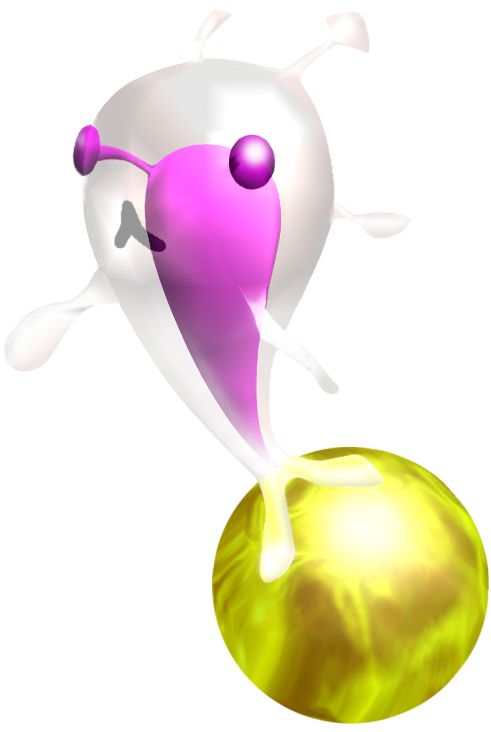
The Honeywisp
(Nektara fatuus)
This cute thing has an upside-down teardrop shape, flaring into three little sucker toes at the bottom. It has two small nubby "flippers," a couple of "antennae," a little ghostly frown and a pair of purple eyes connected by thin stalks to the single purple organ, or something, inside its transparent body. It's like a little alien cartoon ghost, and all it wants is to collect nectar to feed its babies! It's completely unaggressive, but the big nectar ball it carries around is delicious to Pikmin, and you can throw them at the Honeywisp if you want it to drop its nectar. In the second game, it instead carries its eggs around, but you can still do the same thing because you're a monster.
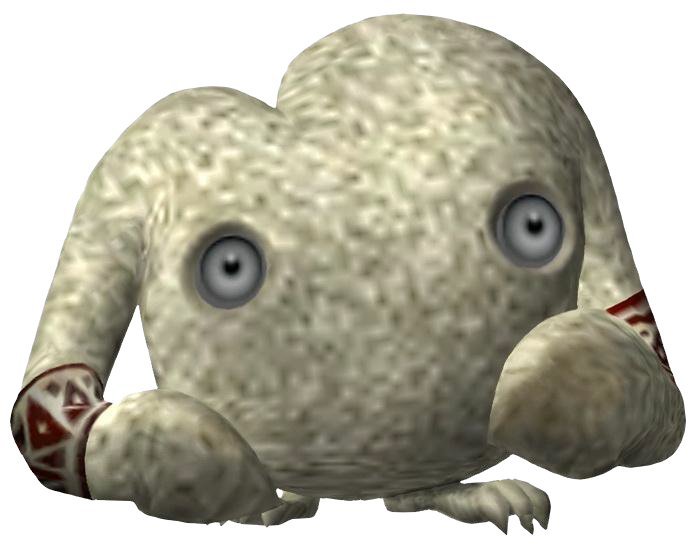
Mamuta
This mysterious creature isn't given a scientific name, because its taxonomy is apparently impossible to place I guess. It resembles a lopsided grey stone with circular blue eyes and no visible mouth, though its surface is apparently supposed to be densely furry. It has two arms long enough that the elbows can drag on the ground, and these end in simple mittenlike hands, while its legs are invisibly short, forcing it to waddle awkwardly on its clawed feet. Only one exists in the first game, and it likes to watch Pikmin activity, but won't attack unless attacked first, at which point it chooses to simply smack Pikmin into the ground - planting them and forcing them to flower - rather than kill them, apparently having an affection for flowering plant life of all sorts and tending to large gardens.In the second game, there are several Mamuta, but they're more aggressive. Maybe the idea is that Olimar and his Pikmin canonically kill that first one (whether or not the same player ever did) and the rest haven't forgotten.
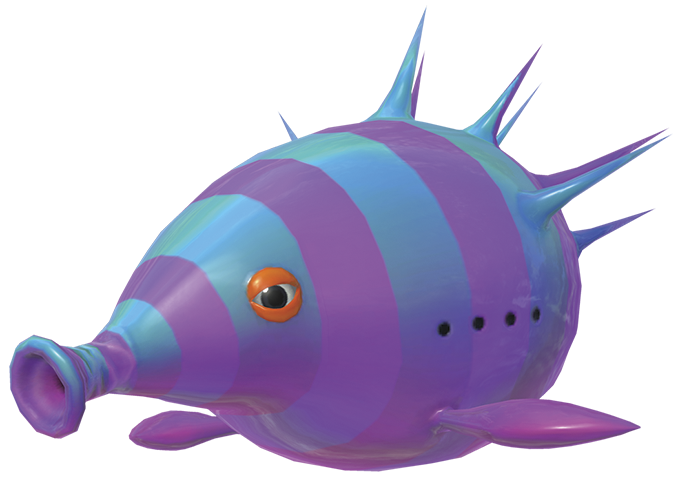
The Puffy Blowhog
(Sus inflata)
This large, aerial blowhog species floats through the air with its internal gases. It swaps its four legs for two flippers, it has long spines scattered around its back half, there are four pairs of black respiratory pores down its sides (nice little biological detail!) it has more lively eyes with bright orange eyelids and its whole smooth, rubbery body is striped in blue and purple. Instead of breathing fire or spurting fluid, it blows concentrated gusts of air to knock over its prey, and apparently also does so to blow over leaves and expose tasty insects.
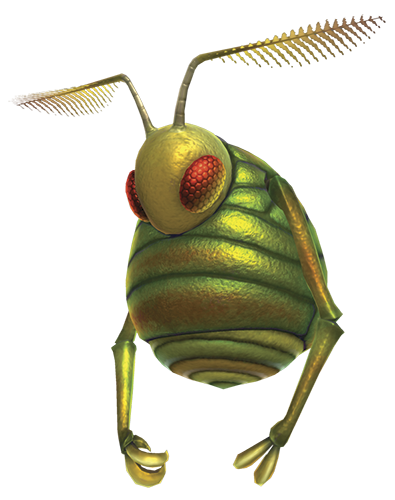
The Swooping Snitchbug
(Scarpanica kesperens)
Lovably silly, the S. kesperens has an egg-shaped, metallic golden green body with a segmented, wrinkled texture, but divided into only two actual segments, thorax and short abdomen, by a more obvious dark seam. It has only two long, arm-like limbs, a round yellow head with red, multifaceted eyes, no other facial features and a a pair of large, feathery antennae it uses as its wings. A hilarious awkward anatomy, and its behavior is even odder; it doesn't eat Pikmin, but it will swoop down (hence the name) to grab one in each hand, fly up high, and violently throw the Pikmin straight down, hard enough to plant them in the soil. Field notes mention that there's no known reason for this behavior. I think maybe it just saw what you did, is all.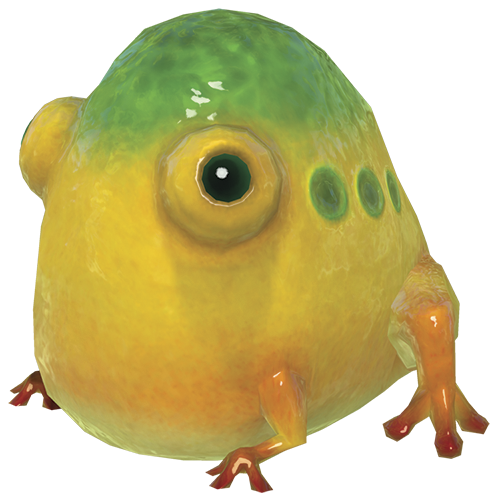
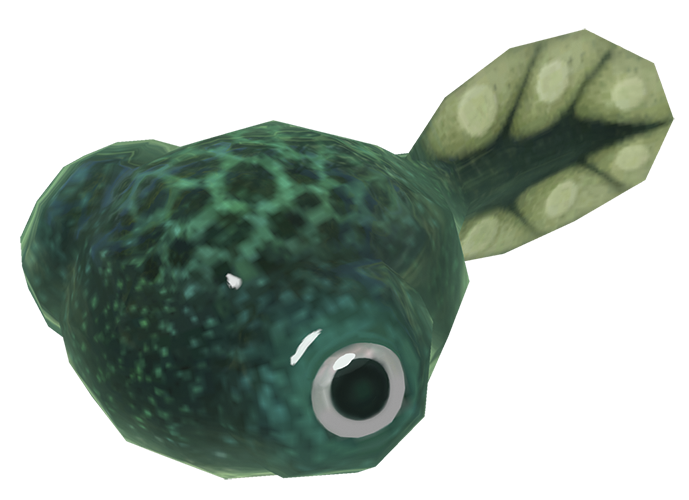
The Wollywogs
(Amphicaris frodendum)
These froggies form a group called the "Amphitubers," and are sort of tall, dome-shaped frogs with bulging goldfish-like eyes, no visible mouths, and relatively tiny limbs. A. frodendum is the Yellow Wollywog, while a white, subterranean variety with a slightly more deflated shape is Amphicaris albino. In both cases, the mature frogs attack by leaping into the air, somehow hovering in place for a moment, then slamming down to crush any Pikmin they can, apparently to drive the little predators away from their helpless Wogpole larvae.
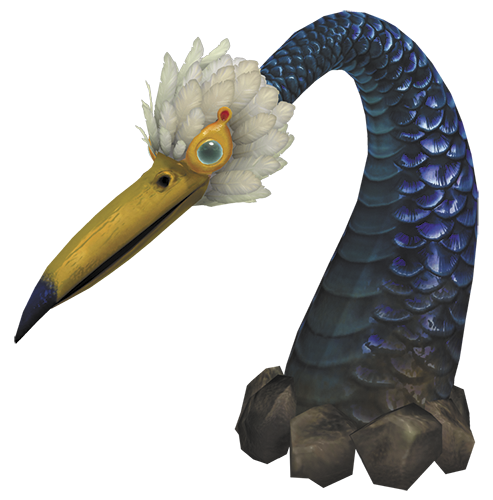
The Burrowing Snagret
(Shiropedes anacondii)
This is one of the more famous boss battles, and feels as iconic to the series as the Bulborbs; the Snagret is a tunneling, serpentine bird, its snakelike body covered in short, overlapping metallic blue feathers resembling reptilian scales, while its head is more traditionally birdlike, with white poofy plumage, cold blue eyes and a long, pointed yellow beak with a black tip. The idea of a snake-shaped bird is great speculative evolution, something I hope might actually happen in our planet's distant future, though I find it hard to believe it can really burrow with just a pointed beak! A totally fossorial bird would need a more shovel-like beak shaped to push soil aside, like the claws of a mole, and would more likely evolve its wings or legs to achieve this.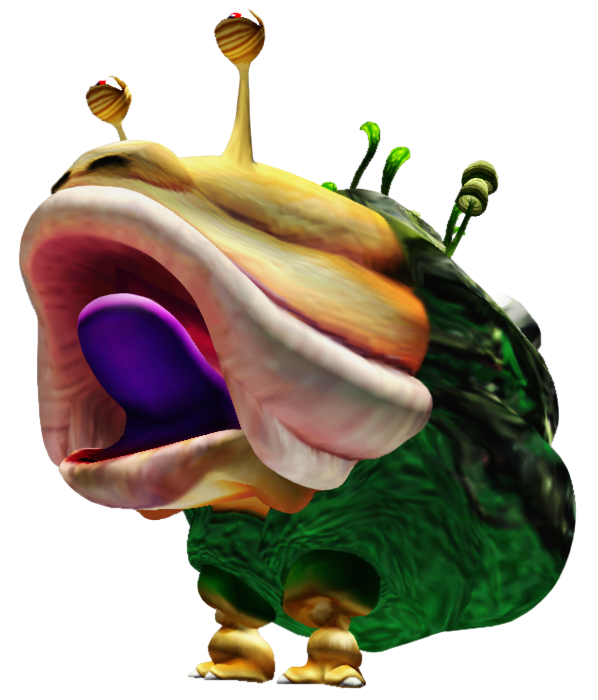
The Emperor Bulblax
(Oculus supremus)
Ths is the final boss of the original game, but I'm reserving more personal favorites for last as is my tradition. That's not to say the Bulblax isn't great, though; it's a huge Bulborb species that evolved into a camouflaged ambush predator whose hunting methods aren't unlike those of a toad mixed with a stargazer; it buries itself with only its eyes exposed, and snatches up prey with its big, sticky tongue. It sits in place so long that moss, ferns and mushrooms collect on its rocky back, while its face, once exposed, is like a much flabbier, jowlier Bulborb. In the second game, you encounter smaller, younger ones without as much epiphytic foliage.
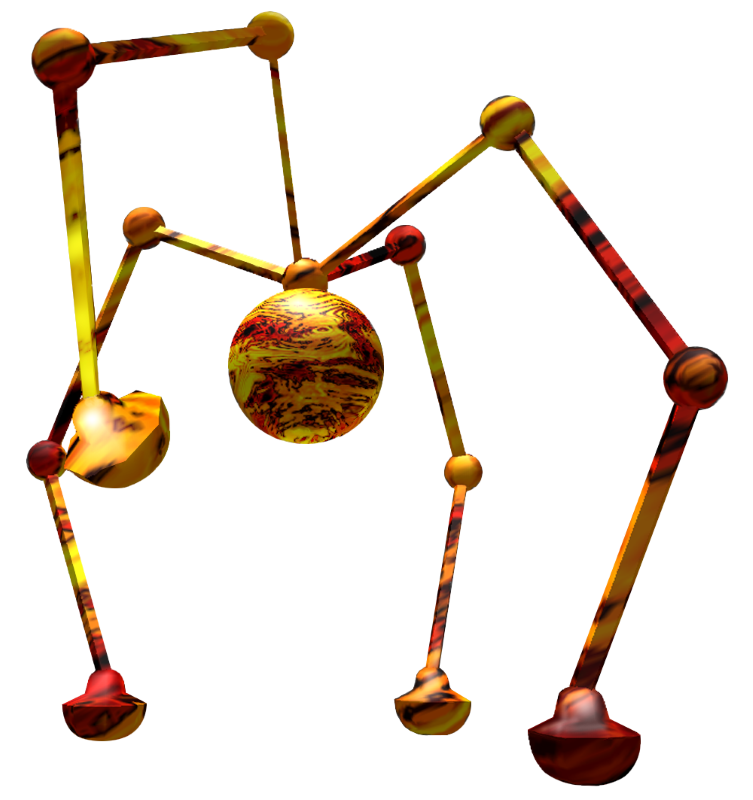
The Beady Longlegs
(Pseudoarachnia armoralis)
This is a pretty cryptic entity, or at least feels like it should be, but the field notes insist it's just an arthropod that didn't evolve an obvious head? It doesn't even look natural at all; it's a perfect sphere with four long, mechanical looking spidery legs, each ending in a metallic half-sphere foot, rounded end pointed downward, that it uses to stomp and squish Pikmin. It has no demonstrated way of feeding or any other known behavior, leading some fans back in the day to theorize it was actually a tiny robot left behind by humans.
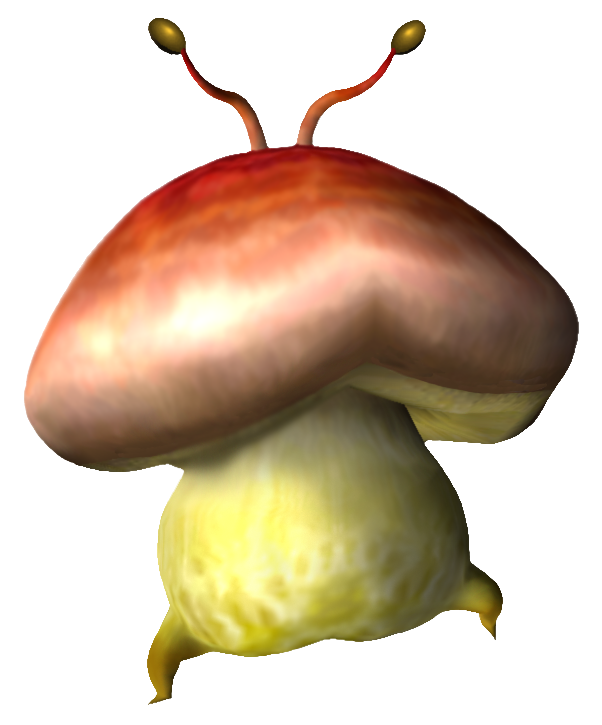
The Puffstool
My second favorite creature in the original game, the Puffstool is a pudgy mushroom with pitifully tiny little legs, barely a couple of points tapering off its rounded yellow stalk, it has a much wider, swollen cap with a cleft in the middle that's probably meant to make it look like a pair of goofy cheeks (I won't say what else it looks like), and it has a pair of little snaily stalks on top with what may be luminous "eyes," though I'm kinda prone to reading the front edge of the cleft cap like a set of concerned "eyebrows," despite the lack of any face otherwise.
The Puffstool mainly wants to be left alone, but it has a vital piece of your spaceship, so you're forced to be the bad guy yet again. To defend itself however, it releases clouds of spores that infect Pikmin parasitically!

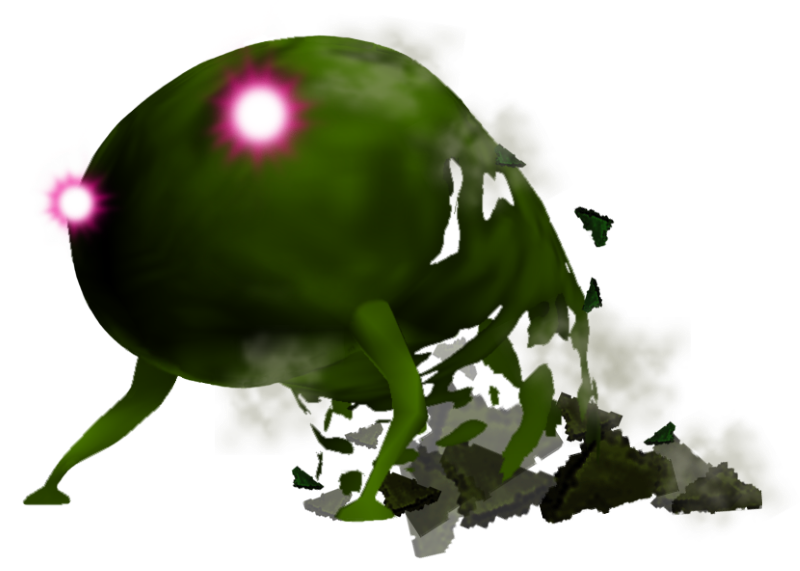
The Smoky Progg
My personal favorite Pikmin creature will come as no surprise at all to those familiar with it and with this website. This somewhat "secret" boss battle is a
ball of noxious green gas with glowing purple eyes the back of it trails
off into gooey smoggy gunk and it drags itself around on two thin
little green arms each ending in a sucker-like foot. It feels a lot like
something they'd put in a studio Ghibli movie to embody mankind's
pollution, or something, and its origin in-game is even weirder than
that; it hatches from what is suggested by the field notes to be a
Mamuta egg, and the Progg is theorized to be a Mamuta that failed to
complete its development, making it a poisonous mutant embryo from a
"rotten" egg. RAD! I wish this had remained a series staple, I'd have
loved to see it in moister and gooier high definition.This wraps up all I can say about the creatures from the first game, even if I didn't cover them absolutely 100%. I'll cover the next two main games (and a little bit of the spinoffs) in weeks to come, while many of you will be enjoying the fourth. Maybe I will too, but I don't get a lot of time for video games myself these days.


